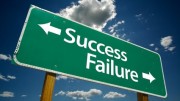I’m back from the future in Las Vegas and the future is bright for IOT and the Supply Chain. Last week, I spent time in my IBM IOT Futurist role at IBM InterConnect. We had over 20,000 leading technology professionals meeting to better understand the future of technology. For me, it as even more personal as I had several clients who wanted to know how and when IOT would begin transforming their supply chain.
It seems like every year my clients have me evaluate their people in critical areas of their business. This year, almost everyone is asking about security and the supply chain. Lucky for us, IBM had many incredible classes to help me better understand what the future holds in these key areas of business. Over the next several weeks I’ll share what I learned and how it might be applied to your business. I have one more major announcement to share, but I’ll wait until we finalized the deal. Let’s get started.
Many organizations are looking to upgrade their supply chain team in the coming year. With many boomers retiring, there seems to be rush to add new people with new capabilities to their current team. From my perspective, it’s not that supply chain teams are ineffective, but more about the increasing demands of customers who expect a more data driven supply chain.
Let’s look at the key factors driving this in the supply chain and then tomorrow we talk about how IOT is going to empower your efforts to build a smarter supply chain today and in the future. My supply chain leaders have five challenges in building a more effective supply chain. Let’s see if you agree.
The first challenge for supply chain leaders is they are responsible for cost containment. Every client I work with faces a global market that is changing their cost structures on a regular basis. Its critical to their organization’s short and long term success. In many situations, they are tasked with reducing cost while improving the quality of the materials and services they buy.
The second challenge for supply chain leaders is customer experience is coming enterprise clients. Their customers want to have a higher level of customer intimacy than they have in the past. Who gets the memo in many successful organizations, the supply chain leader? Are your customers wanting to know more about how their products are being created and going to market? How can you provide this while maintaining your competitive edge?
The third challenge for supply chain leaders is customers expect visibility into their supply chain. How do you provide your customer’s real time visibility into your supply chain processes? Consumers and governments are demanding more visibility while you face continuous downward price pressure. Today, consumers want to know that your organization is working with suppliers who want a better planet. In many cases, they are willing to pay for it, but it must be clear to them that you’re choosing suppliers and partners who are working to improve our environment and our world.
The fourth challenge for supply chain leaders is globalization. Globalization is not a new challenge for supply chain leaders, it has been around for years. The definition of globalization is changing in real time, evolving and challenging even the most flexible organization. Globalization of your partners is making it more difficult to track suppliers. And this doesn’t even include natural disasters that might disrupt your global supply chain at any given moment.
I attended a program put on by the Weather Company that helps organizations deal with changing weather conditions in real time. It was amazing how weather can impact all aspects of how an organization does business. I’ll share more in a future blog.
Finally, the fifth challenge of supply chain leaders is RISK. For most of my clients, risk is a four-letter word that should not be spoken in dealing with supply chain, or business in general. Many of my clients are financial service organizations and they seem to be on the edge because of how risk is going to impact their ability to insure my manufacturing clients in a time of disruptive change.
When dealing with supply chain leaders, I would say over 80% of our conversations deal with risk and how to eliminate it from their supply chain. There are many ways to mitigate supply chain risk and leveraging technologies. That’s what we talk about tomorrow. You’ll want to be here as I share how different technologies can change how you do business while minimizing risk.
See you tomorrow at Developing Serving Leaders.





Be the first to comment on "How Will IOT Help Power Your Future Supply Chain?"